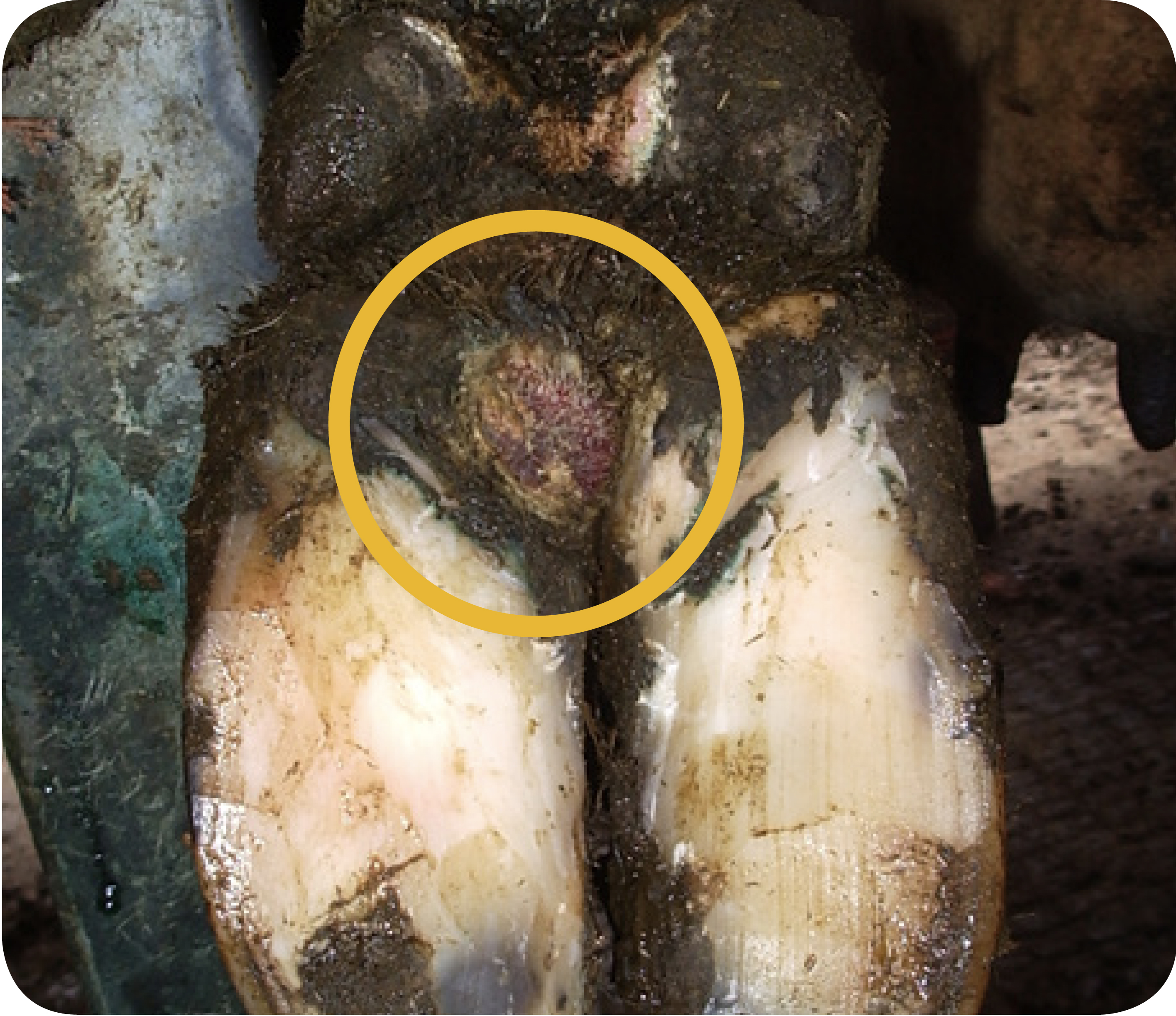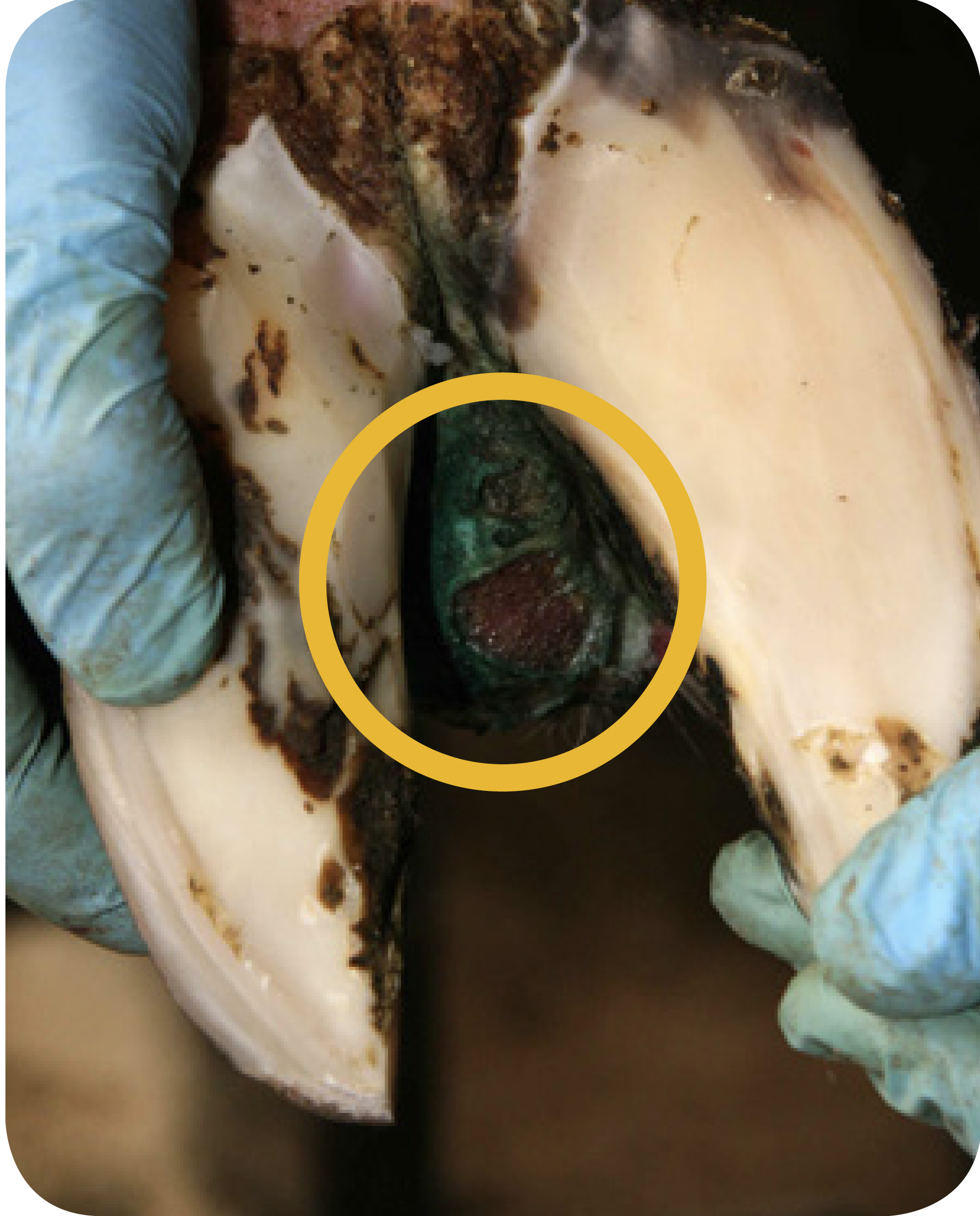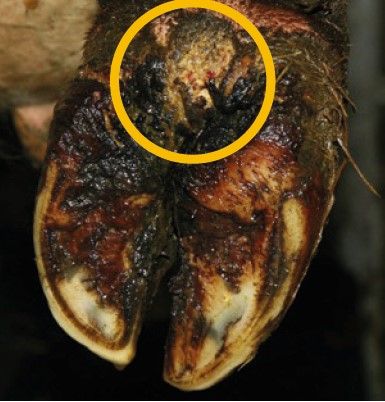- Home
- Knowledge library
- Treating digital dermatitis in lame cows
Treating digital dermatitis in lame cows
Digital dermatitis is a common cause of lameness. Find out how to identify this infection and treat it quickly before it spreads.
What are the symptoms?
Digital dermatitis is usually found at the back of the heel but can occur between the toes, on the hairline at the front side of the foot or even on exposed corium from another injury, like white line abscesses.
Infections of the corium are associated with digital-dermatitis-complicated claw horn lesions.



Digital dermatitis is a skin infection, usually found near the bulbs of the heel. You must lift the foot to treat it effectively.
Preventing the spread of new infections and redevelopment of dormant lesions is critical to its control. Regular foot-bathing, hygiene and disinfection at foot trimming and steps to improve yard or pen hygiene are key to prevention.
To monitor its spread, assess the number of cows with lesions by hosing feet in the parlour to assess general cow foot cleanliness.
Treatment
Step 1 – Remove dead tissue
The bacteria hide deep in the skin and are covered by dead skin and sticky ooze. This must be removed by wiping hard. Digital dermatitis is extremely sensitive to most antibiotics but can be hard to treat as the bacteria hide deep in the skin.
Step 2 – Apply antibiotic spray
A licensed antibiotic spray can be used and works well. Repeat treatments will be necessary for more severe cases. The bacteria prefer an oxygen-free environment, so leaving the area open to the air is recommended.
If bandages are used (to hold bactericide in place), they must be removed within two days. The area to be treated must be cleaned well before applying spray.
Useful links
Foot trimming cattle to prevent and treat lameness
If you would like to order a hard copy of the Hoof care field guide, please contact publications@ahdb.org.uk or call 0247 799 0069.

